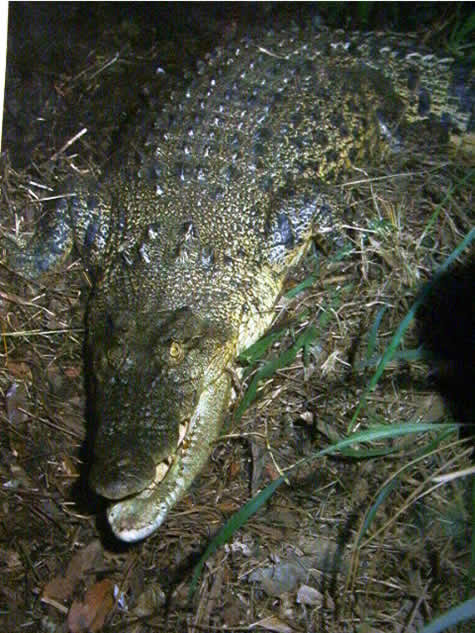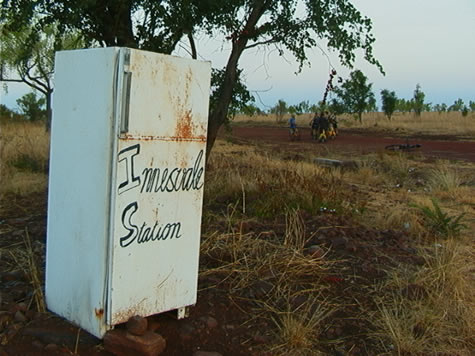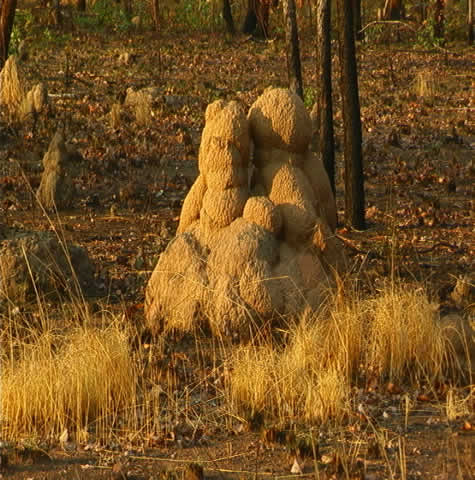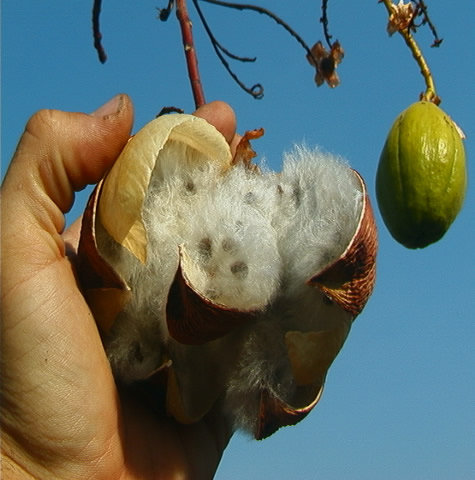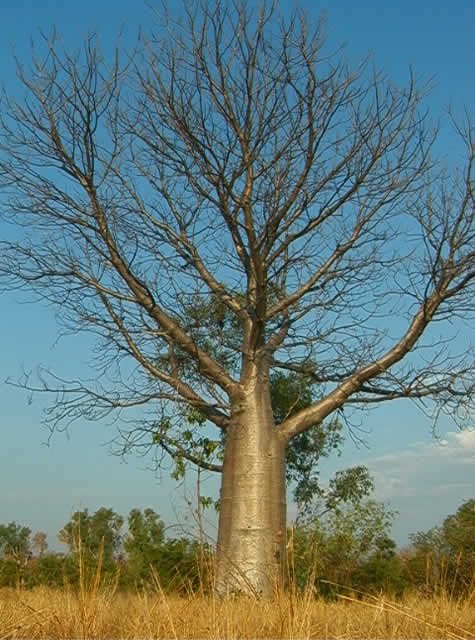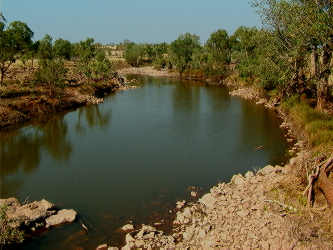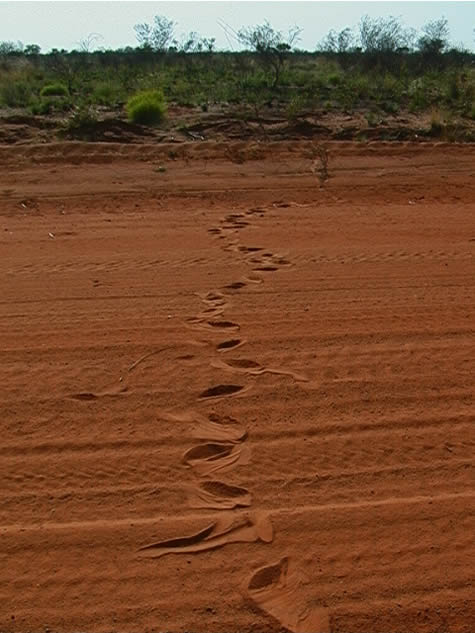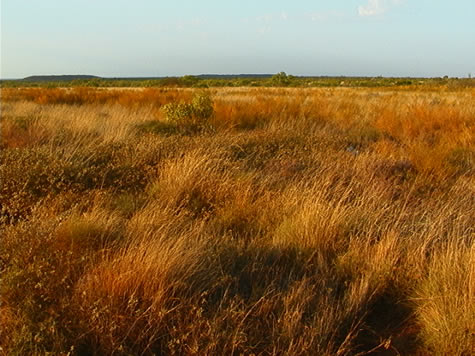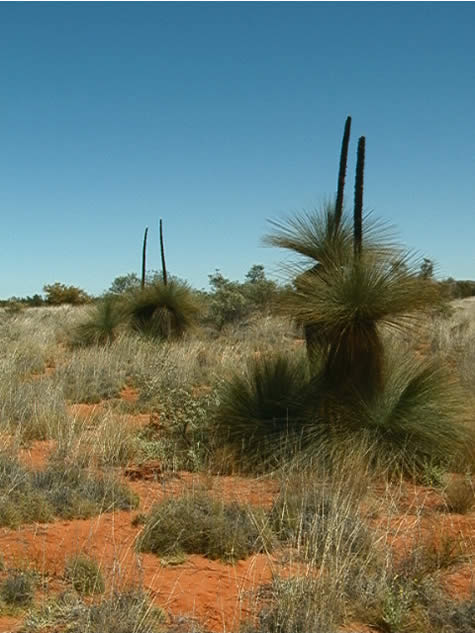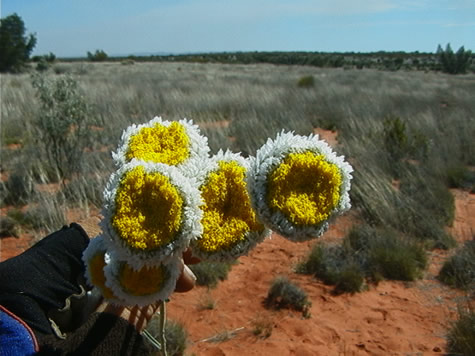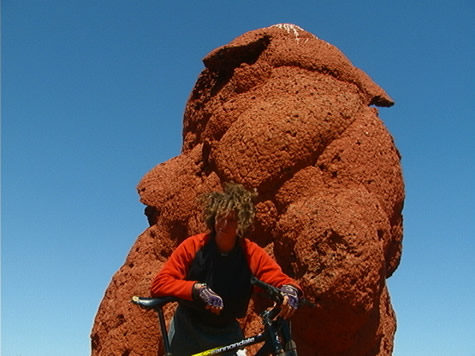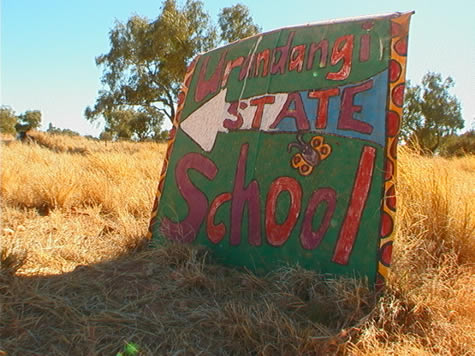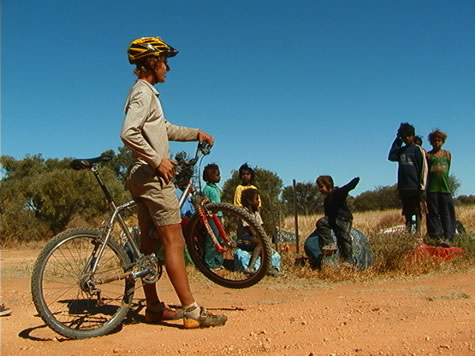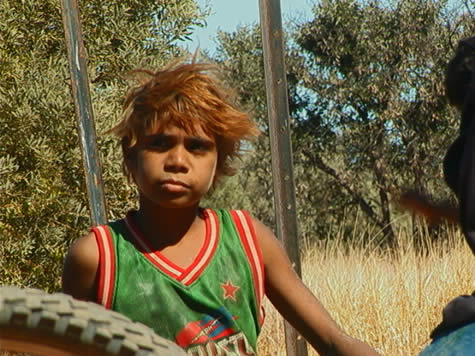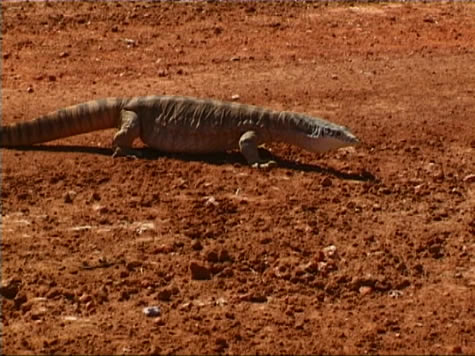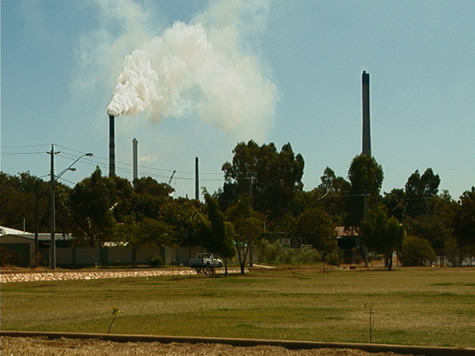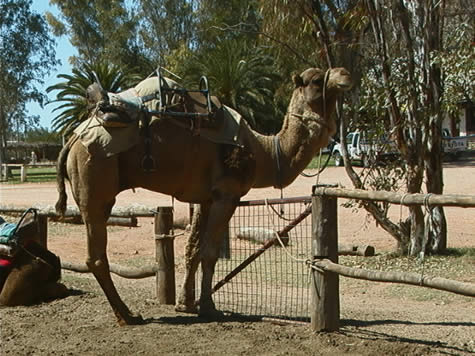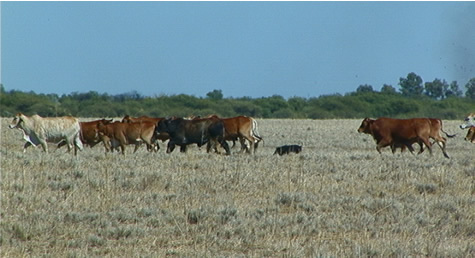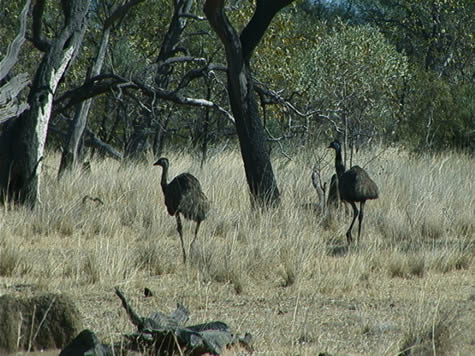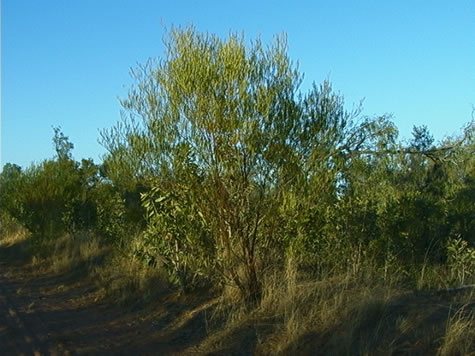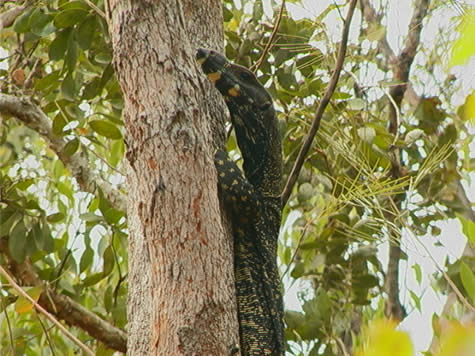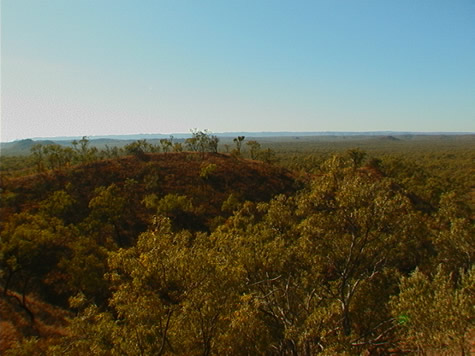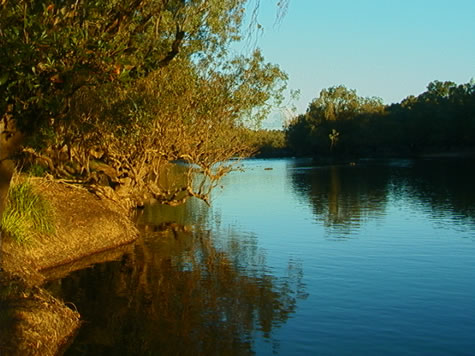Water Storage and the Furphy’s Tank
THEME: Pine Creek
SUBJECT AREA: Environment
TOPIC: Furphy’s
2001 October 15, Monday. North of Pine Creek.
You should have seen us the first time we saw natural running water after the Tanami Desert, near Kalkaringi. Hooting like fools we wallowed in the ankle-depth water, fully clothed, socked, and shoed; sliding on the slimy stone bed, frolicking like children.
Since that time, we have seen water more and more frequently, and almost expect to be camped beside some each evening – but not TOO close. Watercourses in the Top End are almost invariably hazardous to swimmers, and while camping reasonably close by for a one-nighter is considered to be safe, if one was to live alongside one, they could be assured of a visit, sooner or later, from an ever watching and waiting crocodile.
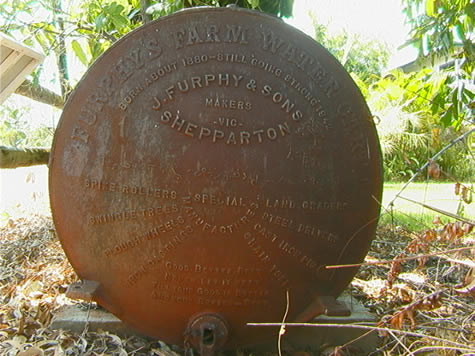
So as a pioneer, how could you avoid this natural environmental hazard? By storing your water away from its source. The Furphy brothers Farm Water Cart, manufactured and used in South Eastern Australia for filling troughs for livestock and watering gardens, was used throughout the country for various agricultural and domestic purposes. The typical example shown in our photograph was manufactured in Shepparton, Victoria, in 1942, and brought to Pine Creek perhaps via the Ghan train line.
The overland transportation of such large pieces of iron is yet another amazing colonial exploit, akin to that of the flywheel we saw at the historic Mount Molloy timber mill, Cape York, which had been cast in Illinois, USA, around the turn of the century. See today’s LITERACY update for details on the cast iron ends and their hidden message.
Suggested learning activities: Identify a natural hazard in your home area, either current or historical. How have people learned to live with it, or adapted to it? Identify places where the natural dangers are too great for humans to inhabit them. What makes these places dangerous? How could humans learn to cope with the dangers by using technology? Are the hazardous places functioning eco-systems without human habitation, or are they desertified places, uninhabitable because of pollution, or previous human misuse?
bel
